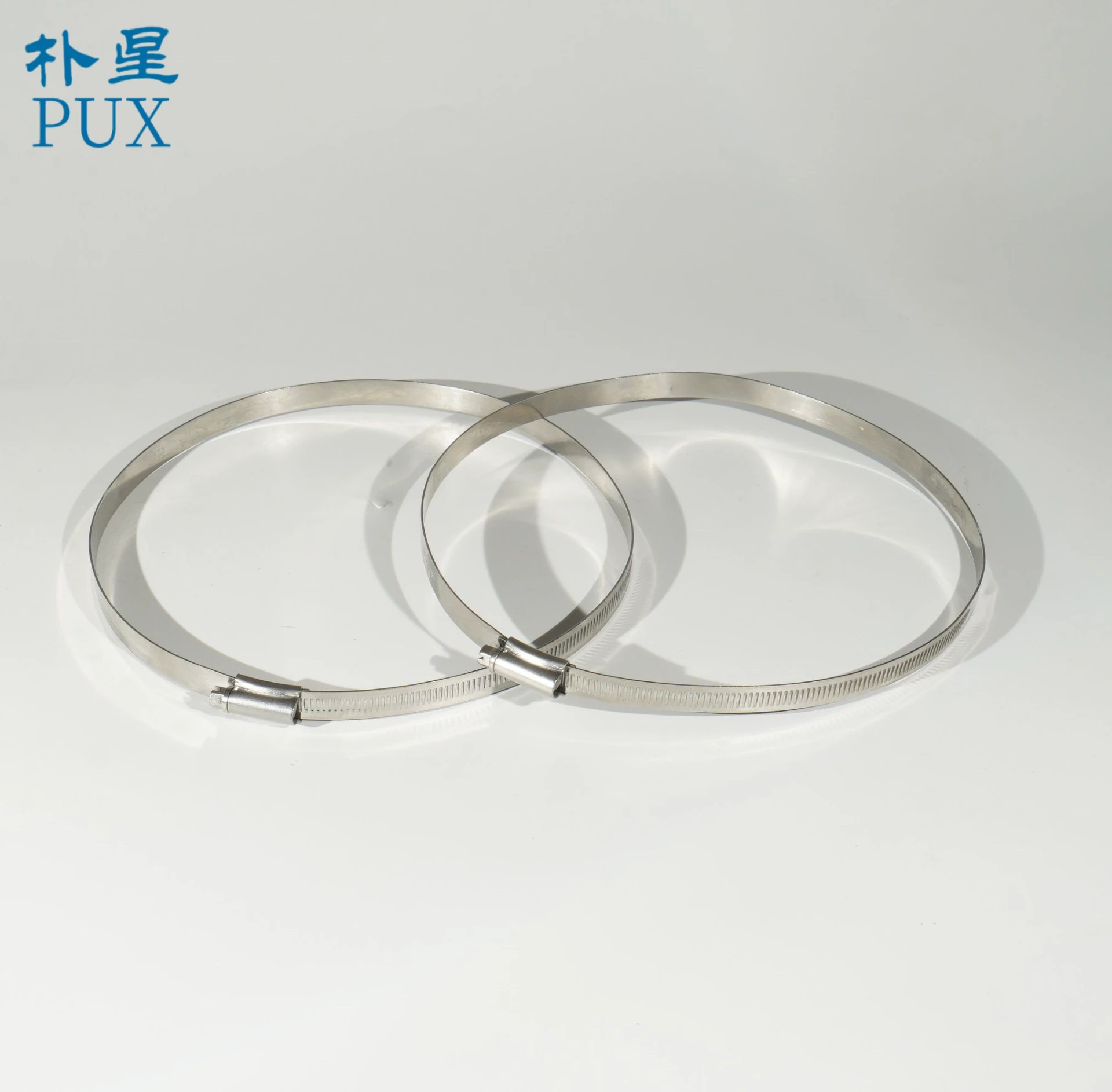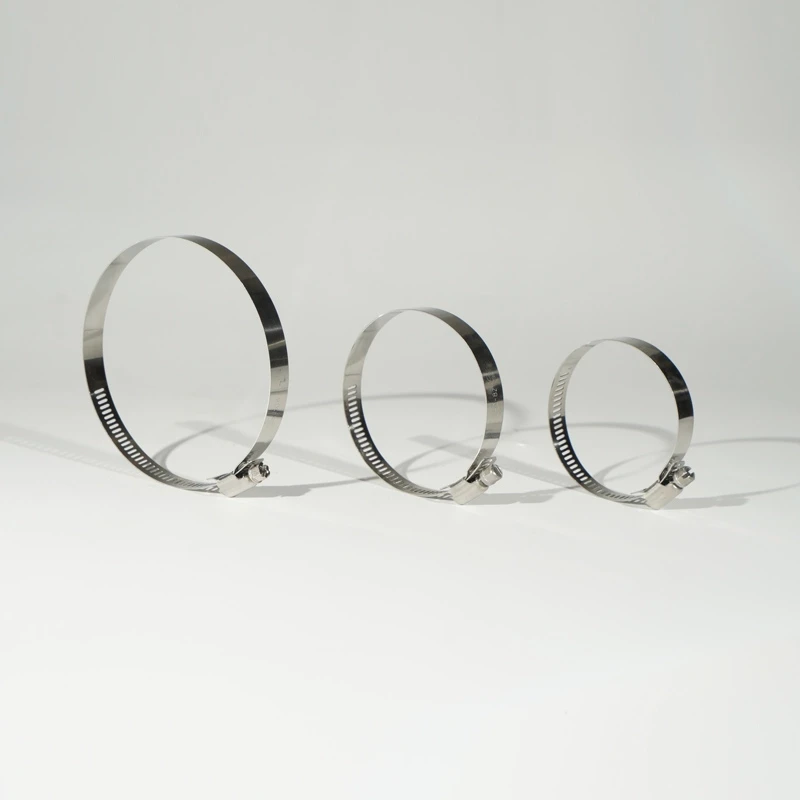- Phone:+86-17331948172 +86-0319-8862898
- E-mail: inquiry@puxingclamp.com
Jan . 09, 2025 10:35 Back to list
High Quality German Type Clamps Clips Stainless Steel Pipe Hose Clamp
In the realm of hardware solutions, hose clamps stand as unsung heroes, crucial yet often overlooked components that maintain the integrity of countless systems. A fundamental piece for both industrial and domestic applications, understanding the selection and application of hose clamps can significantly impact system efficiency and safety.
Selecting a hose clamp involves several critical considerations. Firstly, the material of the clamp should match the working environment. Stainless steel clamps, for example, offer superior corrosion resistance and durability, making them suitable for marine and high-moisture settings. Meanwhile, the size of the clamp must conform closely to the hose and fitting dimensions to provide optimal sealing without overtightening, which could damage the hose or compromise its structure. An often-underestimated aspect is the installation technique. Proper installation mandates even tightening to avoid skewed pressure, which could lead to leaks. Over-tightening can be equally detrimental, potentially cutting into the hose and compromising its structural integrity. It’s advisable to employ a torque wrench for precise application, adhering to the manufacturer’s specifications. For industries where failure is not an option, such as chemical processing or aerospace, the expertise and reliability in the selection and application of hose clamps can translate directly to operational reliability. Here, engaging professionals for installation and regular maintenance checks can further ensure system longevity and performance. These sectors often employ precision-engineered solutions, capitalizing on clamps that undergo rigorous quality control measures to meet stringent industry standards. The trustworthiness of a hose clamp depends significantly on the brand's reputation and adherence to quality standards. Brands that are ISO certified or have undergone third-party testing provide an additional layer of confidence regarding performance and durability. Checking for compliance with industry standards, such as SAE or RoHS, can offer assurance of quality and environmental responsibility. Ultimately, the authority in utilizing hose clamps comes from the comprehensive understanding of their applications and the meticulous attention to detail during selection and installation processes. With the right approach, these small components can play a vital role in enhancing the efficiency and safety of fluid transfer systems across a wide range of applications.


Selecting a hose clamp involves several critical considerations. Firstly, the material of the clamp should match the working environment. Stainless steel clamps, for example, offer superior corrosion resistance and durability, making them suitable for marine and high-moisture settings. Meanwhile, the size of the clamp must conform closely to the hose and fitting dimensions to provide optimal sealing without overtightening, which could damage the hose or compromise its structure. An often-underestimated aspect is the installation technique. Proper installation mandates even tightening to avoid skewed pressure, which could lead to leaks. Over-tightening can be equally detrimental, potentially cutting into the hose and compromising its structural integrity. It’s advisable to employ a torque wrench for precise application, adhering to the manufacturer’s specifications. For industries where failure is not an option, such as chemical processing or aerospace, the expertise and reliability in the selection and application of hose clamps can translate directly to operational reliability. Here, engaging professionals for installation and regular maintenance checks can further ensure system longevity and performance. These sectors often employ precision-engineered solutions, capitalizing on clamps that undergo rigorous quality control measures to meet stringent industry standards. The trustworthiness of a hose clamp depends significantly on the brand's reputation and adherence to quality standards. Brands that are ISO certified or have undergone third-party testing provide an additional layer of confidence regarding performance and durability. Checking for compliance with industry standards, such as SAE or RoHS, can offer assurance of quality and environmental responsibility. Ultimately, the authority in utilizing hose clamps comes from the comprehensive understanding of their applications and the meticulous attention to detail during selection and installation processes. With the right approach, these small components can play a vital role in enhancing the efficiency and safety of fluid transfer systems across a wide range of applications.
Share
Latest news
-
High Quality T Bolt Hose Clip Factory & Suppliers Durable Stainless Steel Hose Clamps for Industrial Use
NewsJul.08,2025
-
High-Quality Hose Clamp & T Clamp Hose Clamp Reliable Factory & Suppliers
NewsJul.08,2025
-
Cold Rolled Stainless Steel Band - Premium Quality Supplier & Factory Price
NewsJul.08,2025
-
High-Quality Steel Strip from China Stainless Steel Coil & Cold Rolled Carbon Strip Manufacturer & Supplier
NewsJul.07,2025
-
High-Quality T Bolt Hose Clip from Leading Factory & Suppliers Reliable t bolt hose clip Factories
NewsJul.07,2025
-
Mini Hose Clamp Manufacturer & Supplier Precision Hose Clamps Mini Clamp Factory
NewsJul.07,2025




